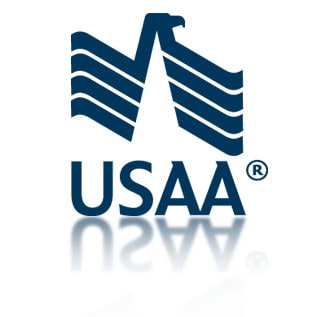USAA’s investment management business recently changed ownership. USAA serves 13 million members, employs nearly 34,000 people, and has a net worth of $30 billion, so this was a significant transaction. Despite these big numbers, USAA was still considered small in the world of financial services companies. That, as much as anything, was a driving factor for the sale.
Here’s what you need to know about how that might affect your relationship with USAA.
When did USAA sell to Victory Capital?
USAA sold its investment businesses to Victory Capital and Schwab in July 2019 and is now a Victory Capital Investment Franchise. Under terms of the agreement, Victory Capital acquired USAA Asset Management Company for $850 million, plus the opportunity for additional contingent payments based on future business performance
Let’s analyze how that affects your plans for financial independence.
The sale of the Asset Management Company includes USAA’s mutual funds, exchange-traded funds, and 529 accounts. It closed in 2019 and Victory expects to finish moving the accounts over to their systems during 2020.
The Investment Management Company includes USAA’s brokerage and managed-portfolio accounts. The sale of USAA’s wealth-management business to Schwab is expected to close later in 2020.
Why would USAA sell these assets, why are these companies buying them, and what’s going to happen to your fund shares?
Consider this. USAA’s investment managers were competing with companies that manage at least 10x the clients and a thousand times as much money. USAA’s fixed expenses were spread over a much smaller base. For every $1 of fixed expenses that the gigantic corporations spent per client dollars, USAA was paying over $1000 of members’ money. Eventually (sooner rather than later) that was creating a business model that was unsustainable.
Over the years I’ve spoken with USAA’s managers about their investment business, and I’ve attended USAA’s annual influencer conferences since 2011.
I’ve also interviewed Matt Dennis, the Chief of Staff & Director of Investor Relations at Victory Capital.
When the Schwab sale completes its regulatory review then I’ll talk with them as well.
The Bottom Line:
Your shares in USAA-branded funds still belong to you, and now the funds are run by Victory Capital. If you’ve signed up for USAA’s wealth-management services, then Schwab will manage your investments for you.
Members do not need to take action on their accounts.
The new firms have much more experience (and size) than USAA would ever have achieved with lower expenses. After the transitions, Victory Capital and Schwab expect to handle these funds better than USAA. That’s a great financial deal for the account holders, although it might change your original reasons for investing with USAA.
USAA made an outstanding move for its members who use the company’s other products & services. After nearly four decades with them, I’m glad to see the new focus on its core insurance and banking. They have a long way to go (I’m lookin’ at you, banking) but the company is heading in a better direction.
All net proceeds from this transaction directly benefit members, not the bottom line. For example, after deal closing and account conversion, USAA improved the competitiveness of its banking and insurance products, and distributed an appropriate amount as part of the annual member distribution process in 2019.
This post will review who benefits, and then we’ll discuss your options.
USAA’s corporate policy

A good deal for the members!
The company offers trust, consolidation, and convenience to its members– for life.
During the last 20 years, USAA has refined another financial core value:
Every product and service has to pay for itself.
This is very different from the rest of the financial industry.
USAA doesn’t use subsidies or loss leaders. They don’t run deficits to gain market share. If one of their divisions wants to boost its insurance program or a credit-card business, then it has to grow it from cashflow or spend its own funds (up front) to make it happen.
We members are paying only for the things we actually use, including prudent risk management. That keeps our premiums lower.
During the decade that I’ve attended USAA conferences, the company has piloted dozens of products and services… and killed off many of them. Even their research center has to make money for the company. (They license their patents.) A few new products were very popular with some of the members but they cost more than those members were paying for their benefits. The rest of us members would have had to subsidize those products or services with our higher fees.
USAA is a private company that doesn’t have to satisfy Wall Street institutions or retail investors. It serves its members, and we pay the operating expenses. I’m happy with USAA’s vehicle insurance because I know that I’m not paying extra to subsidize the launch of their latest life insurance policies… or their mutual funds.
USAA’s motives for selling to Victory Capital and Schwab
USAA just couldn’t compete in the investment business. Believe it or not, they’re too small.
USAA has over 13 million members, and 1.5 million of them had invested billions of dollars in their fund shares.
That small minority of the members bought funds through USAA’s investment services. An even tinier fraction of the membership paid USAA’s wealth managers to handle their investments for them.
Meanwhile USAA was competing with companies who manage trillions of dollars for tens of millions of account owners. BlackRock, Vanguard, Fidelity, and Schwab aren’t just handling more members and assets than USAA. They’re orders of magnitude bigger.
USAA has struggled with this investment scale for years. In 2014, they hired National Financial Services to run their brokerage infrastructure. NFS is a subsidiary of Fidelity Investments. USAA was trying to minimize its fixed expenses (by outsourcing to a world-class back-office contractor) while boosting member services with its own world-class managers.
The business model was unsustainable. USAA could have invested additional hundreds of millions of our member dollars to boost their efficiency (and attract more investors), but it would have been a waste of money. USAA is one of America’s best insurance companies, but they couldn’t outspend (let alone outgrow) the investment industry’s behemoths.
I think USAA has burned through enough member money to find the solutions. It’s time for someone else to deal with the issues.
USAA could have shut down their accounts and funds and returned the cash to their owners. (The financial industry does this all the time with struggling mutual funds.) However, USAA had already spent hundreds of millions of dollars to build those divisions and could recover some of it for the members.
The value of USAA’s investment businesses

Victory Capital manages mutual funds. Over the last six years, they’ve bought the funds from 11 other small investment companies and they manage them for the investors who buy the fund shares.
VC won’t collect management fees from USAA– they earn them from the people who own the shares. Victory gets its owner’s profits from scale and efficiency. The company’s fixed expenses are spread out over many more investment funds, and Victory has paid for the enterprise-class systems to squeeze out the excess costs. In addition, the company consolidates their buy & sell orders for the assets in all of their funds. Their size means that they also get better prices on their trades in the actively-managed funds.
USAA’s mutual funds are tiny in comparison to the rest of the industry. That helps make them nimble, but it’s expensive. Actively-managed funds have much higher research & trading costs than index funds, and expense ratios of 0.5%-1.3% are all too common for an active fund. Meanwhile, passive index funds have expense ratios of 0.03%-0.20%.
As an example, USAA’s Cornerstone Aggressive fund (UCAGX) has an expense ratio of 1.21% to invest roughly $300M. If Victory Capital can reduce that to 1.00% then they’ll save 0.20%– over $600K per year. Some of the savings can go to the fund’s shareholders as a higher return, too.
USAA has 74 actively-managed funds. Every one of them has the same problem of small size and higher expenses.
Victory can solve these problems, and they’re big enough to do it well. You can read more at Victory Capital’s annual report.
The value of military clients

USAA’s members are also valuable to companies like Victory Capital and Schwab. Those firms want to attract more military clients.
America’s military population is over 60 million servicemembers, veterans, families, and immediate relatives. 13 million of those people are USAA members, yet only about 2.5 million of them own investment accounts through USAA. Nearly 11 million more USAA members could shop at Victory Capital and Schwab and then those companies could sell to millions more.
Victory will market USAA’s fund brand to another 58 million people with a military affiliation. If they attract just 2-3 million new shareholders then they’ll spread their fixed expenses among twice as many people.
What’s in it for you?
If you’ve bought shares in any USAA mutual funds or ETFs, you’re still the owner of those shares. If you have any investment accounts with USAA (including 529s, IRAs, and taxable brokerage accounts) then you’re still the owner of those accounts.
Let’s answer some of the other member questions.
The funds still have the same USAA brand name. (Victory Capital paid a high price for that brand and the shareholders.) Victory is just the new owner, and they have the tools to reduce the expenses for their clients.
If you’re using USAA’s brokerage, or if you’ve signed up for their portfolio management service, that will be handled by Schwab. You still own the accounts and the money in them, and Schwab has the scale and experience to reduce your expenses there too.
All USAA members benefit from the sales to Victory and Schwab. By the end of 2020, USAA will have a new focus on insurance and banking– without trying to handle an investment branch. There might even be a little extra distribution in the Subscriber Accounts.
In March, Victory’s Investor Relations department reached out to me and I asked for an interview. On 13 April I spoke with Matt Dennis, the Chief of Staff & Director of Investor Relations.
He says that Victory’s CEO is moving the majority of the company’s staff to San Antonio. (USAA’s headquarters has been there for decades.) Their new office of 120 people will include about 50 of USAA’s member service representatives who moved over to Victory as part of the sale of the asset management company. Victory’s back-office operations will stay in Ohio (about 80 people), and another 160 employees are spread across the country in smaller franchise offices.
Victory is already reducing the expenses of USAA’s funds. They’re waiving fulcrum fees during the next year. However, there’s a long way to go on the high expense ratios of the actively-managed USAA funds.
Mr. Dennis says that Victory is also boosting customer service without passing on expenses to their clients. Investors in USAA funds can continue to invest through Victory (with direct sales of their funds) without having to open a brokerage account. All of Victory’s call-center employees are licensed representatives, and members can also ask to speak with a certified financial planner. (USAA has struggled for a few years with this part of member service.) Victory’s CFPs offer free reviews of clients’ accounts to recommend asset allocations and discuss other changes.
Both USAA and Victory are beefing up their website security with wider two-factor authentication and other new infrastructure. (Cyberattacks are a bigger concern than ever, and every major investment firm in the country is enhancing their security.) The cybersecurity branches of both companies are unlikely to let members log in to their accounts through each other’s servers.
Mr. Dennis quickly pointed out that you can always see your USAA fund shares by linking them to USAA’s website or Personal Capital or other financial dashboard aggregator apps. That keeps the “consolidation” benefit.
To manage those shares, however, USAA members who invest in USAA funds will eventually have to log in to a Victory Capital account or call USAA’s toll-free number to be connected with Victory’s call center (or call a Victory phone number directly). This reduces USAA’s “convenience” benefit.
Mr. Dennis promised that Victory Capital will continue to improve its client communications. The company was too quiet during the transition from USAA, and Victory is working harder on direct-mail and e-mail updates. He said they’re also coordinating with Schwab for USAA’s wealth-management clients who are moving over to Schwab’s systems. Victory already does this with Schwab clients for several other fund companies that Victory has acquired over the years.
Victory will continue its financial literacy programs. (They plan to donate $1M in grants to non-profit financial education groups, including military organizations.) Hopefully, they won’t create yet another financial literacy website, and I’ve encouraged them to reach out to military financial conferences and other groups. Victory can support more non-profits and counselors who are already helping military families pay off debt, boost their budgeting, and grow their wealth.
Pros and Cons of USAA
The change in ownership has enhanced the user experience for USAA members. There continues to be a lot to like about a USAA membership for military personnel.
Pros
Founded 100 years ago by a group of Army officers to provide insurance services. Since that time, it has grown to become one of the top fully integrated financial services organizations in America, offering military members banking, car and homeowners insurance, purchase and refi mortgages, investment advice, credit card services, and a wide range of products and services.
Customer service is placed at a premium and this is reflected in consistently high customer service satisfaction.
For banking services, there are no monthly fee checking and savings accounts, no minimum balance requirements, and no overdraft transfer fees if you opt for overdraft protection.
Your first 10 withdrawals at any of the 60,000 USAA affiliated ATMs are free each month, and all transactions made with any of the 1,200 USAA branded ATMs are also free
USAA refunds up to $15 per month in other banks’ ATM usage fees for transactions at ATMs in the United States.
A highly-rated mobile app is available on Google Play (4.5 stars, 174,000+ ) and App Store (4.8 stars, 1.3 million ratings).
Cons
USAA’s banking is only available to those who have served in the military and their spouses and children. Civilians may take advantage of some of USAA’s insurance services.
Much of USAA’s service is virtual as evidenced by the fact that USAA only has five physical locations in the U.S. Customers needing support will generally have to get it online or over the phone.
Annual percentage yields on investments are competitive, but customers may do better elsewhere. For example, the basic USAA Savings Account has an APY of 0.03% and a minimum opening deposit of $25.
What if you’re unhappy about the sales?
USAA still offers trust, consolidation, and convenience for its members.
You can still trust the USAA brand name on the mutual funds and ETFs, but it’s clear that the majority of USAA members didn’t care about consolidating their investments for convenience.
I’ve heard from several friends and readers who are frustrated with Victory Capital’s transition and communication. (If you’re happy with the transition, then please leave a comment below or contact me!) Victory has committed to improving that.
If you feel that active investing is still the right strategy for your wealth, then give Victory Capital another year to show what it can do. You’ll know it’s working when they reduce the expense ratios of the actively-managed funds.
If you’d still rather pay someone to manage your wealth, then give Schwab a year to prove their skills. They offer world-class service to thousands of investment advisors across the country, and they’ll do the same with their new wealth-management clients from USAA.
If you don’t want to wait for the Schwab acquisition to close, then Schwab will pay you to make the transition on your own. It might seem unbelievable that Schwab will pay up to $500 for you to move now, but it’s a pittance against the total cost of moving over a million of USAA’s wealth-management clients. (Schwab will also recoup some of those payouts from Victory Capital and other fund companies who already pay a revenue share to market USAA funds on Schwab’s systems.) This is one more way to directly reduce your investing expenses.
My spouse and I invested in actively-managed mutual funds in the 1980s and 1990s, and we sure paid the fees for it. We finally recognized the problem at the turn of the century, and we’ve been very happy with index funds since 2004. If you’re no longer happy with active funds then consider USAA’s passively-managed index funds. One of my CFP friends (also a military retiree) likes the 500 Index Reward fund and the Extended Market Index fund.
I’m not going to rehash the perpetual debate of active management versus passive index funds, but I’ll point out that the passive funds will return more than 99% of their benchmark’s performance for extraordinarily low expenses and taxes… and far less of your effort at picking the funds or managers. They’re very cheap for Victory Capital to run, and they’ll probably reduce their expense ratios as they attract more military clients and grow the funds.
If you’re not happy with wealth management from Schwab after getting your $500 incentive then… that’s a tough problem to solve. Schwab has some of the biggest and best operations for the industry’s lowest fees, and if their wealth managers can’t keep you happy then it might be time to change your investment style.
You could search for fee-only advisors through NAPFA, the Garrett Network, or the XY Planning Network. Consider advisors who only charge for specific tasks or projects, with no commissions or other upsells. You can also read about Harry Sit’s advice-only search service to locate advisors who will help you set up your investments and let them run in autopilot. It’s a lot cheaper than typical wealth managers, and it might turn out that you don’t need as much of the management part.
If you’re curious about taking charge of your investments (and automating them) then you can learn more at the trustworthy and objective Bogleheads Wiki, or contact me with questions.
Your Call To Action
If you were a client with USAA investment funds or wealth management, then what’s your plan? Please use the comments to tell us what you’re going to do.
Is USAA Still Good?
If anything, the change in ownership and commitment to enhancing services makes USAA an even better bet for many service members. It has always been a financial institution serving a transient population, so USAA has also always been on the cutting edge of financial technology, and this, teamed with legendary customer service, continues to make it an attractive choice for service members in many ways.
Military Guide to Financial Independence
This book provides servicemembers, veterans, and their families with a critical roadmap for becoming financially independent. Topics include:
- Military pension
- TSP
- Tricare Health System
- & More





Comments:
About the comments on this site:
These responses are not provided or commissioned by the bank advertiser. Responses have not been reviewed, approved or otherwise endorsed by the bank advertiser. It is not the bank advertiser’s responsibility to ensure all posts and/or questions are answered.
Ian Stewart says
Why am I getting an email about something that happened 2-3 years ago?
Doug Nordman says
Good to see you again, Ian.
Readers who are subscribed to a post’s comments will receive notifications when the post is updated. This update is part of the Three Creeks Media edits and links:
https://the-military-guide.com/under-new-management-again/
George says
This was awful. I only found out about this because I went into USAA and couldn’t find my old IRA account. I called and they couldn’t tell me what my new account number nor what company has it!!!. I called Schwab and they don’t have it. The VC website couldn’t find me via the “forgot your log in info link”. Have to call when they are open during business hours only of course. (don’t worry its not like people have to work or anything right?)
Right now, nobody knows where my IRA account is. Horrible!! I will be closing every account I have with USAA going forward. If VC can’t find my IRA account I will have to find me a lawyer and file a lawsuit. If anyone knows of one please let me know. What a horrible way of doing business!
Larry R Phipps says
Very dissatisfied with Victory Capitals’ acquisition and management of USAA Mutual Funds. Victory Capital has stopped distribution of monthly investment statements for my share purchases. Also Victory Capital continues to provide incomplete verification of periodic investment information USAA mutual Fund transaction confirmation statements. This is not consistent in the mutual fund industry and give investors concern regarding the accuracy and security of their investments.
Ian Stewart says
I know this comment is a bit late, but I just came across the article today.
My biggest complain about the sale of USAA Investment Management Co to Victory and Schwab is the total lack of transparency. My wife and I (both USAA members) found out about the sale AFTER it was finalized! It came as a complete surprise to us and left us with a strong feeling of betrayal. Until the day we received the letter announcing the sale of IMCO, we had absolute trust in the organization and its management team.
Regarding Victory, we too have had many issues with them and are very dissatisfied with their service. We’re looking at moving our accounts elsewhere.